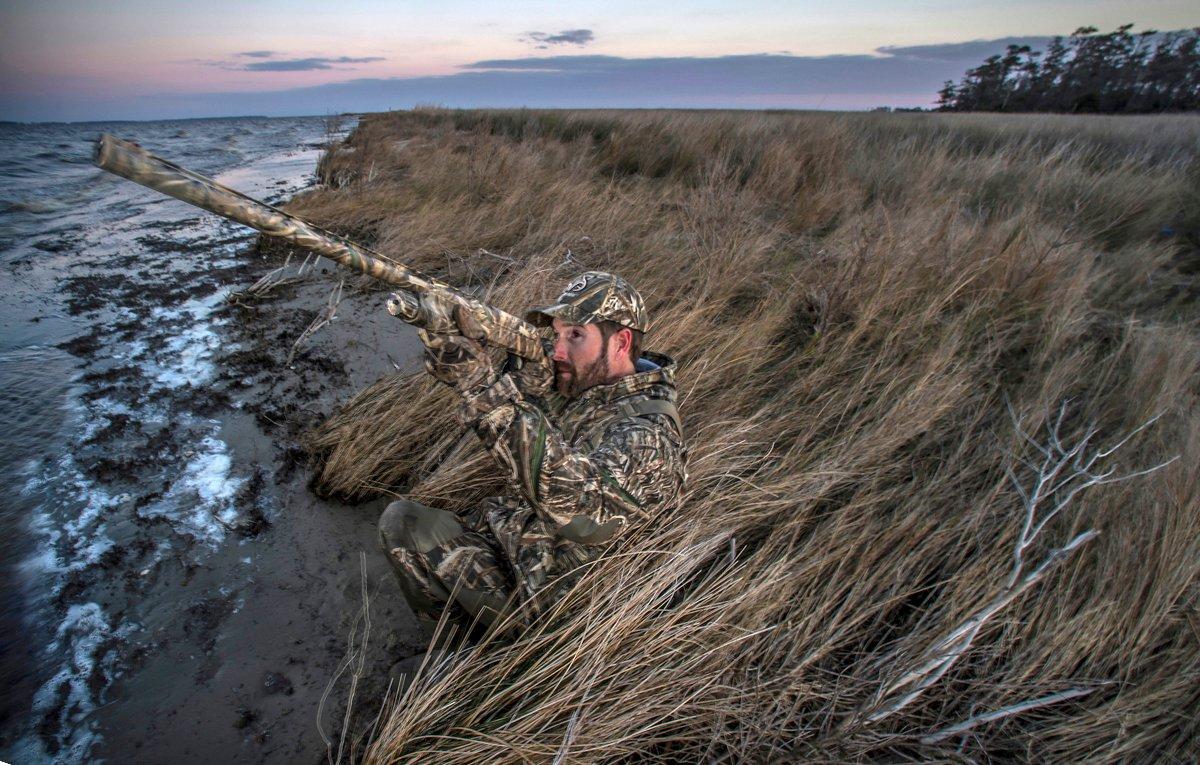Reliability, performance and personal preference play huge roles
You hear it all the time in blinds, fields or other places hunters gather; folks wondering if XYZ company's latest model is a good duck gun.
Well … maybe.
Many elements combine to create a waterfowl shotgun that some people consider ideal. Several are common, others based on personal preference. A few might be classified as bells and whistles, yet others determine whether the gun performs when the pit boss shouts take 'em.
Let's look at several features that define a quality duck shotgun, listed here in order of least to greatest importance (at least to me).
No Pretty Ones
Man, I love good-looking shotguns, including fancy over-and-unders with gorgeous wood, and classy side-by-sides with case-hardened receivers and beautiful blued barrels. I'll hunt pheasants or grouse all day with those guns — but not ducks and geese.
I prefer waterfowl shotguns with rugged, non-reflective, low-maintenance exteriors; that is, models with Cerakote, Parkerizing, baked-on camouflage or other scratch- and rust-resistant finishes. Waterfowl hunting already requires lots of work, and I don't want to worry about having to oil and polish my duck gun every time it rains or snows, or when I drag it through the mud. Further, I don't need guilt feelings if my gun slides down some streamside rocks or gets smacked against boat gunwales.
I used to shoot a blued pump and a mid-level double-barrel in the marsh, and both eventually got scratched and nicked, and developed rust and pitting when my maintenance efforts lagged. Nowadays, modern finishes keep my gun looking good while saving me a few minutes of work each night.
Fit is Foremost
Even the coolest-looking shotgun is worthless if it doesn't fit you. Many considerations fall under the large, vague umbrella of fit, including a gun's cast, weight, overall length, barrel length, length of pull, drop at comb, drop at heel and the ergonomic qualities of the grip and forend.
I'm no gunsmith or shooting instructor, so I won't pretend to give technical advice in this area. Suffice to say, if a gun's measurements and balance don't mesh with your physical characteristics, trouble arises. You must be able to shoulder the shotgun smoothly and easily, and your eye should look directly down the barrel or rib. It must swing naturally and finish with solid follow-through. The gun should feel comfortable and balanced in your hands. Otherwise, you probably won't shoot it well.
Technology lets you adjust some features to improve gun fit, but other aspects are a bit more idiosyncratic. Bottom line: Try a gun before plunking down your money. If it flies to your shoulder, feels like an extension of your hands and eye, and breaks clays with ease, it probably fits you well. One more thing: Try it while wearing your hunting clothing. A gun you shoulder well during summer trap sessions might catch on your heavy outer layer in December.
It's Gotta Finish
Your duck gun is only as good as its performance afield. That is, it's of little value if you can't consistently kill ducks or geese with it.
As mentioned, much of that ability relates to fit. However, other factors contribute, too, including point of impact and how it patterns with various chokes and loads. Some guns seem to be lethal right out of the box. With others, you might have to fine-tune your shell and choke selection to reach maximum effectiveness.
Again, the bottom line is simple: Learn about a gun before you buy it. Borrow a buddy's model and shoot a few games of sporting clays. Fire rounds at a still target to note pattern density and point of impact related to point of aim. Or better, use it a day or two in the blind. There's no better litmus test.
It Must Go Bang
That's paraphrasing a Phil Robertson quote, of course, but it's true. An unreliable shotgun is nothing more than a boat anchor in the duck blind. It must fire, eject spent hulls and cycle reliably time after time. If it doesn't, ditch it.
Much of that relates to maintenance. You can't expect to run your autoloader for five days during a saltwater eider hunt and expect it to function flawlessly. But let's agree that some guns perform more reliably than others given routine maintenance and cleaning. Talk with other hunters to learn about guns they consider to be reliable. In addition, ask about models that have jammed or failed to fire in the field.
Also, find a cleaning method that wrings maximum performance from your shotgun. For example, some autos do better when run dry, with little interior lubrication. Other function better with more oil or CLP.
Further, some autos don't like certain shells, and the hulls might jam or stovepipe after being fired, even though hulls from other manufacturers fly out with ease. Identify problem-children shells and avoid them.
Ultimately
Your favorite duck gun might not be my choice, and vice versa. What matters is that your shotgun provide you with rugged, durable, efficient and lethal operation afield. You'll know you've achieved that when you rarely think about your gun while hunting. Instead, you'll marvel at how few shots it took to collect your latest limit.
Click here for more Realtree waterfowl hunting content. And check us out on Facebook.











